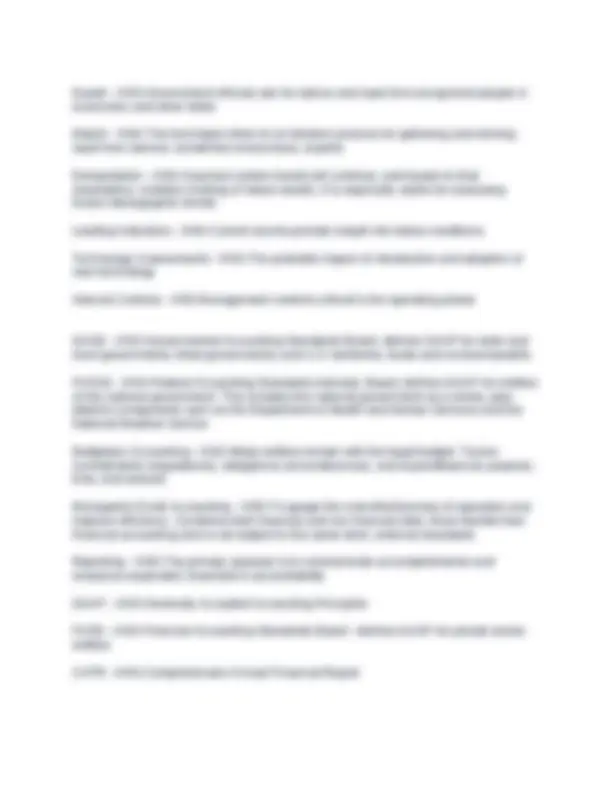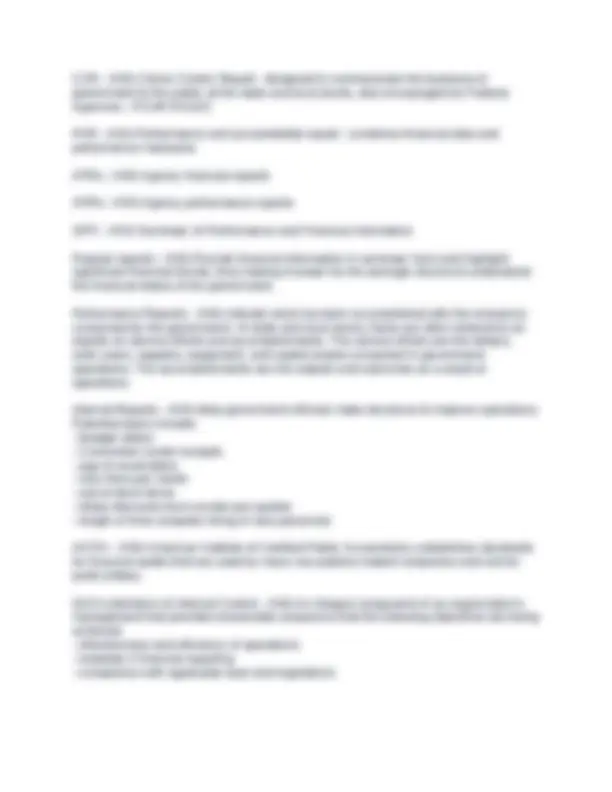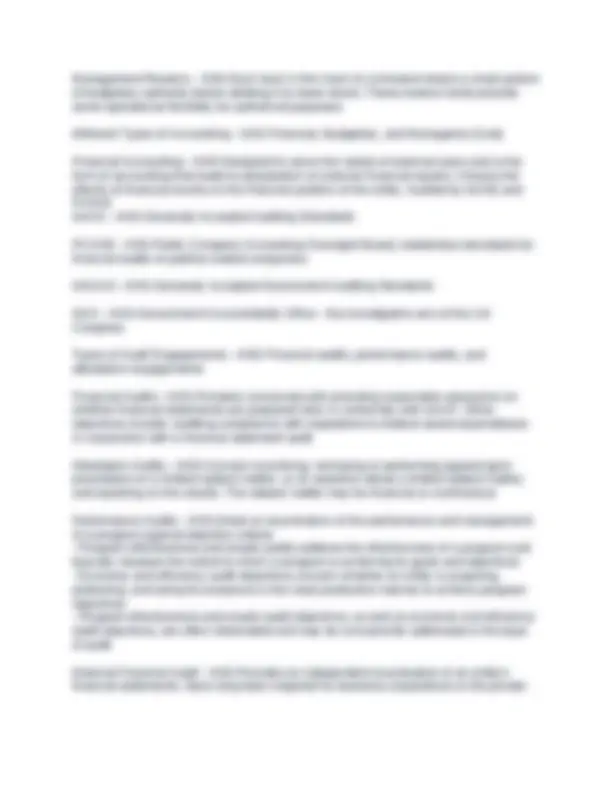





Study with the several resources on Docsity

Earn points by helping other students or get them with a premium plan


Prepare for your exams
Study with the several resources on Docsity

Earn points to download
Earn points by helping other students or get them with a premium plan
Community
Ask the community for help and clear up your study doubts
Discover the best universities in your country according to Docsity users
Free resources
Download our free guides on studying techniques, anxiety management strategies, and thesis advice from Docsity tutors
CGFM Exam 1 Section 3 Government Management Cycle
Typology: Exams
1 / 6

This page cannot be seen from the preview
Don't miss anything!




Government Management Model Phases - ANS-1. Planning
-Level of resources that will be requested during the budgeting phase -Decisions on how resources will be distributed among various offices and programs to achieve objectives Budgeting - ANS-A central control device in the government management cycle. They are laws or ordinances that reelect the priorities and objectives of government and the citizens observed. Types of Budgets - ANS-Operating, cash-flow, capital Operating Budgets - ANS-- Cover a limited period, usually one or two years
CCR - ANS-Citizen Centric Report - designed to communicate the business of government to the public at the state and local levels, also encouraged for Federal Agencies - FOUR PAGES PAR - ANS-Performance and accountability report - combines financial data and performance measures AFRs - ANS-Agency financial reports APRs - ANS-Agency performance reports SPFI - ANS-Summary of Performance and Financial Information Popular reports - ANS-Provide financial information in summary form and highlight significant financial trends, thus making it easier for the average citizens to understand the financial status of the government. Performance Reports - ANS-Indicate what has been accomplished with the resources consumed by the government. At state and local levels, these are often referred to as reports on service efforts and accomplishments. The service efforts are the dollars, work years, supplies, equipment, and capital assets consumed in government operations. The accomplishments are the outputs and outcomes as a result of operations Internal Reports - ANS-Help government officials make decisions to improve operations. Potential topics include:
Management Reserve - ANS-Each level in the chain of command retains a small portion of budgetary authority before allotting it to lower levels. These reserve funds provide some operational flexibility for authorized purposes Different Types of Accounting - ANS-Financial, Budgetary, and Managerial (Cost) Financial Accounting - ANS-Designed to serve the needs of external users and is the form of accounting that leads to preparation of external financial reports. It tracks the effects of financial events on the financial position of the entity. Guided by GASB and FASAB GAAS - ANS-Generally Accepted Auditing Standards PCAOB - ANS-Public Company Accounting Oversight Board; establishes standards for financial audits of publicly traded companies GAGAS - ANS-Generally Accepted Government Auditing Standards GAO - ANS-Government Accountability Office - the investigative arm of the US Congress Types of Audit Engagements - ANS-Financial audits, performance audits, and attestation engagements Financial Audits - ANS-Primarily concerned with providing reasonable assurance on whether financial statements are prepared fairly in conformity with GAAP. Other objectives include: auditing compliance with regulations to federal award expenditures in conjunction with a financial statement audit Attestation Audits - ANS-Concern examining, reviewing or performing agreed-upon procedures on a limited subject matter, or an assertion about a limited subject matter, and reporting on the results. The subject matter may be financial or nonfinanical Performance Audits - ANS-Entail an examination of the performance and management of a program against objective criteria: